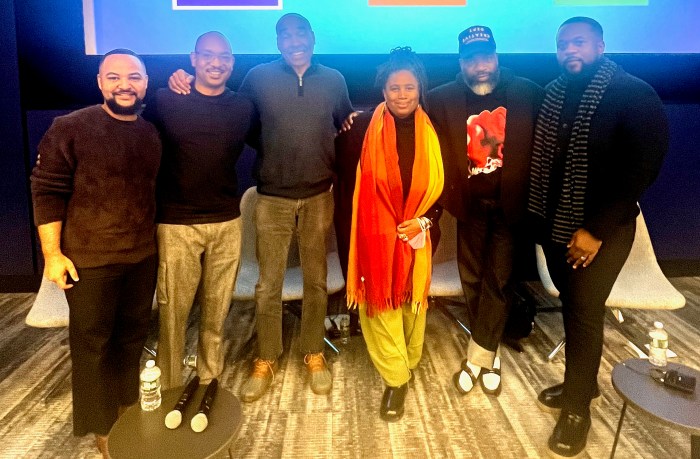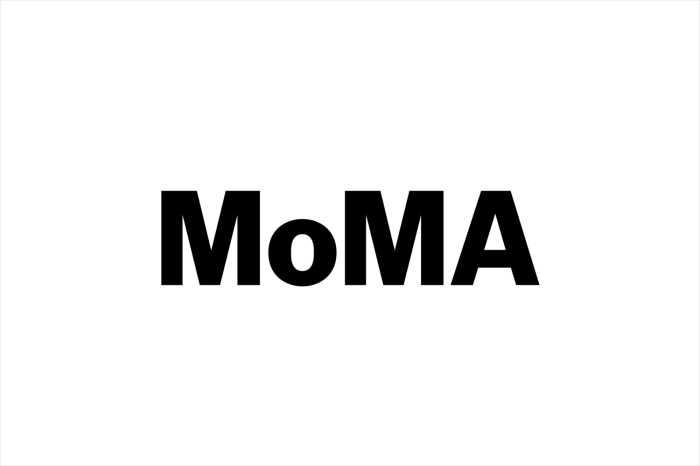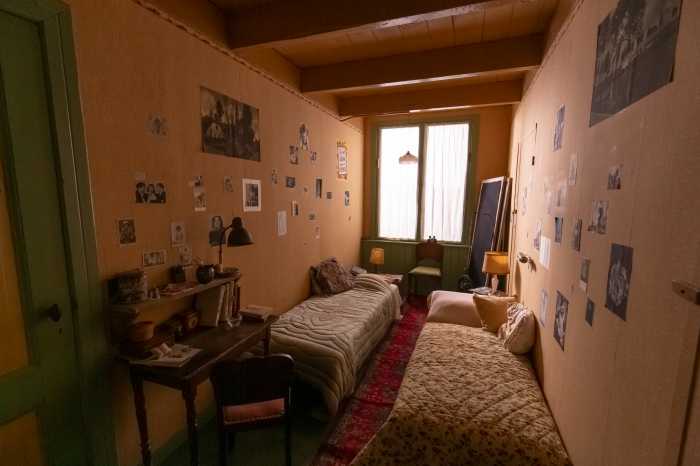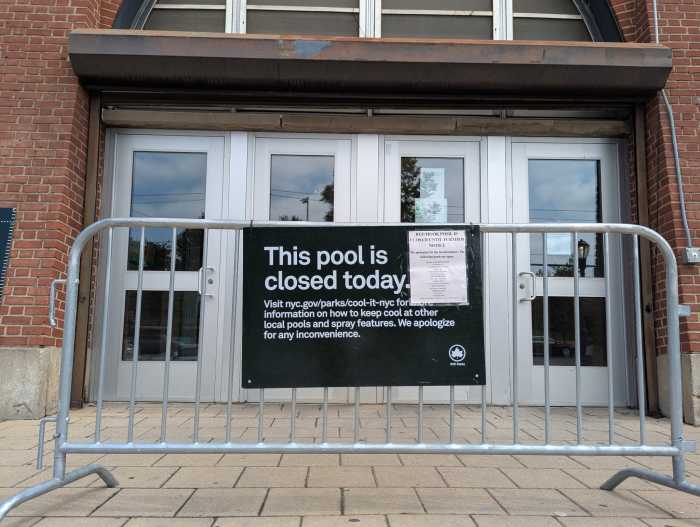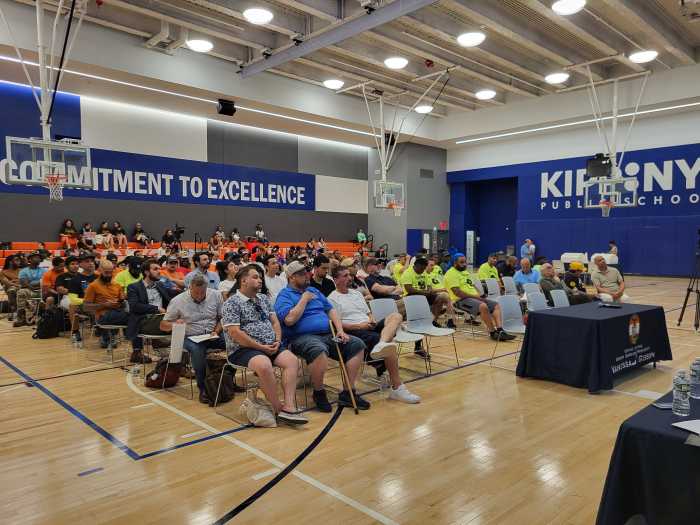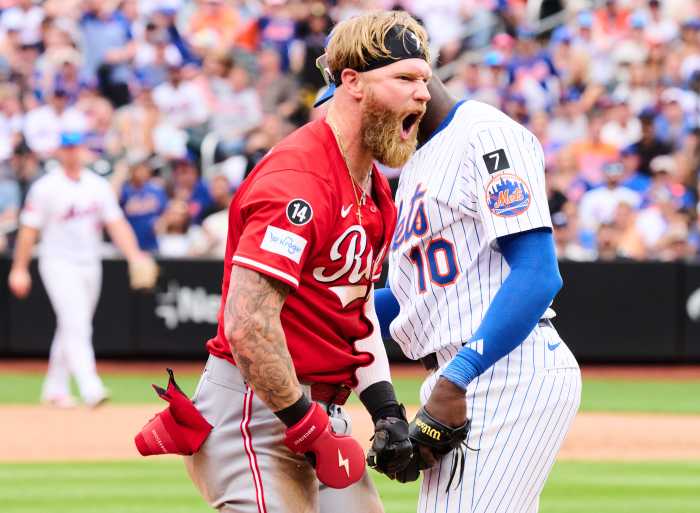Harvey Redding facilitateserotic drawing workshop
Being the organizer of the Queer Men’s Erotic Art Workshop, an inevitable question Harvey Redding fields is how he finds his models.
“I don’t necessarily look for men who are ‘Chelsea boys’,” he says. “I pick guys who have a sexual appeal, a sense of their own sexuality, of their own sexual weight. I interview each model, we’ll meet at a Starbucks…”
Excuse me, Starbucks? Could there be a less sexy meeting place?
“I stopped interviewing at my home because I felt like the classic Hollywood producer with the Hollywood casting couch,” Redding explains. “I mean, the men are gorgeous. And they walk in, and some of them throw themselves at you—they think that’s part of it. I enjoyed it for a little while, but I really felt like it was beside the point.”
Consummation is not what Queer Men’s Erotic Art Workshop is about. Sex is in the air, but it’s sublimated, transferred into the art being made. “We all thought we’d have hard-ons,” says one workshop participant. “Instead, the only hard-on was in my hand, drawing.” Well, technically not the only hard-on: the model is expected to get aroused, so to speak, and quite often does.
Though the aspect of voyeurism is unavoidable with the workshop, speaking with Redding what soon becomes clear is that the models themselves are exploring their sexuality as much as the artists. In fact, that’s where the show derives its name, Redding says. “One night, one of the artists turned to me, and whispered, ‘Oh, he’s going into his sex coma,’ which is that moment when the model goes into a kind of trance. They get in character and forget everything outside of their own little sexual cocoon.”
Redding often picks models who are themselves artists, or, at the very least, interested in the arts. The models, it turns out, are often as enthusiastic as their admirers. One model, Sparky, is also an art collector, and he brought to his session a bag of sex toys. For many of the models, being chosen to disrobe in front of a group of admirers is a moment of triumph.
“Many of the guys were really unattractive as a kid: overly serious, glasses-wearing students,” says the bespectacled Redding. “And they come to New York and discover the gym, and now they’re just soaking it up. And creating a whole new definition of who they are.
“There’s this one model, Curtis, who rides a motorcycle. He used to be a married truck driver in the Midwest. Then he discovered he was gay and came to New York. And now, through the workshop, he’s got a whole new group of friends. He’s found out that he’s actually a bottom, and really wants to pose with his ass.”
Redding explains that the reason he started the workshop is that he and other illustrators were previously able to use only cut-and-paste photo collages as a basis for their erotic work.
Redding also became frustrated by life drawing classes—even some run by gay men—where the models were posed in standard, neo-classic styles.
“I just thought, here we are living in New York, struggling with our sexuality—why can’t this be part of it?” Redding found the existing drawing classes resistant to the idea of incorporating erotic poses. “So I went to the Leslie-Lohman Gay Art Foundation and asked, ‘Why don’t we do it here?’ And now it’ll be two years (for the class) in December.”
The workshop presented the Leslie-Lohman Foundation an opportunity to help create gay artwork rather than merely curate and collect it. The center has accommodated the workshop with free use of its space two nights a week, free wine for the workshop and, of course, the SexComa exhibit. “I had always wanted to do something like this here at the gallery,” explains Wayne Snellen, Director of the Leslie-Lohman Foundation.
“Harvey has been quite marvelous,” continues Snellen. “He’s the kind of person who, once he has an idea, doggedly keeps at it until he gets it accomplished. Harvey’s also quite personable and is able to work with a lot of the big egos that the workshop attracts. And he’s an excellent artist, besides.”
Redding has for years supported himself as a commercial graphic designer for Old Navy and the Gap. More recently, he’s been pursuing freelance illustrations—not with just erotic magazines, but for The New York Times, POZ, the Wall Street Journal, and gayhealth.com.
Although the illustrations have led him back to the fine arts path he’s wanted to pursue since college, the current workshop has presented unexpected obstacles.
“The issue for me has been not being able to concentrate on my drawing. [Recently,] I’ve given up posing the model and just facilitate the evening, to give myself some energy to focus on drawing. But I’m physically quite shaky. So I end up drawing things that have to do more with gesture, and are more abstract. I had to use that nervousness.” Which has, in turn, influenced his other work. “I find myself working with a more spirited line, an emotional line,” he says.

